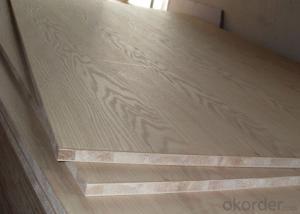When it comes to home improvement projects or construction work, plywood is a go-to material for many. But have you ever wondered why the price of plywood can vary so much? Let’s dive into the factors that can make a huge difference in the cost of this versatile material.
The Type of Plywood Matters
The first thing to consider is the type of plywood you need. There are different types of plywood, such as hardwood, softwood, and marine-grade plywood, each with its own price tag. Hardwood plywood is more expensive due to its durability and resistance to wear and tear. Softwood plywood, on the other hand, is more affordable but may not last as long. Marine-grade plywood is designed to withstand moisture, making it perfect for boat building and other water-related projects, but it comes with a higher price tag as well.
The Quality of the Plywood
Quality is another significant factor affecting the price of plywood. Higher quality plywood will have fewer defects and a smoother surface, which can translate to a higher cost. It’s essential to balance quality with your budget, as you don’t want to overspend, but you also don’t want to compromise on the durability and longevity of your project.
The Size of the Plywood Sheets
The size of the plywood sheets you purchase will also impact the cost. Larger sheets tend to be more expensive, but they can also save you time and effort in cutting and fitting them to your project. If you’re working with a smaller space or have a limited budget, smaller sheets might be a more cost-effective option.
The Quantity You Buy
Buying in bulk can save you money in the long run. Plywood suppliers often offer discounts for purchasing larger quantities, so if you have multiple projects or need a lot of plywood for a single project, buying in bulk might be a smart move.
The Source of the Plywood
Where you buy your plywood from can also affect the price. Local suppliers may have lower prices due to reduced shipping costs, but they might not have as wide a selection. Online retailers and big-box stores can offer a broader range of options but may charge more for shipping and handling.
The Time of Year
Believe it or not, the time of year can influence the cost of plywood. During peak construction seasons, the demand for plywood increases, which can drive up the price. If you can plan your project around off-peak times, you might be able to snag a better deal.
Labor Costs for Installation
Don’t forget about the labor costs associated with installing your plywood. If you’re not installing it yourself, you’ll need to factor in the cost of hiring professionals, which can add a significant amount to your overall project cost.
Sustainability and Eco-Friendly Options
In today’s world, many people are looking for sustainable and eco-friendly options. Some plywood manufacturers offer products made from responsibly sourced wood or with low-VOC adhesives. While these options are commendable, they can also come with a higher price tag.
The Finish of the Plywood
The finish on the plywood can also affect the price. Pre-finished plywood is more expensive than raw plywood, but it saves you the time and effort of finishing it yourself. If you have the skills and the time, opting for raw plywood and finishing it yourself can be a more budget-friendly choice.
Customization and Special Orders
If you need a specific type of plywood that’s not commonly available, you might have to pay extra for customization or special orders. This can include unique sizes, finishes, or even specific types of wood that aren’t standard in the market.
In Conclusion
Understanding the factors that affect the cost of plywood is crucial for any project planner or home improvement enthusiast. By considering the type, quality, size, quantity, source, time of year, labor costs, sustainability, finish, and potential customization, you can make informed decisions that balance your budget and your project’s needs. So the next time you’re at the hardware store, you’ll know exactly what to look for and why that plywood is priced the way it is.

